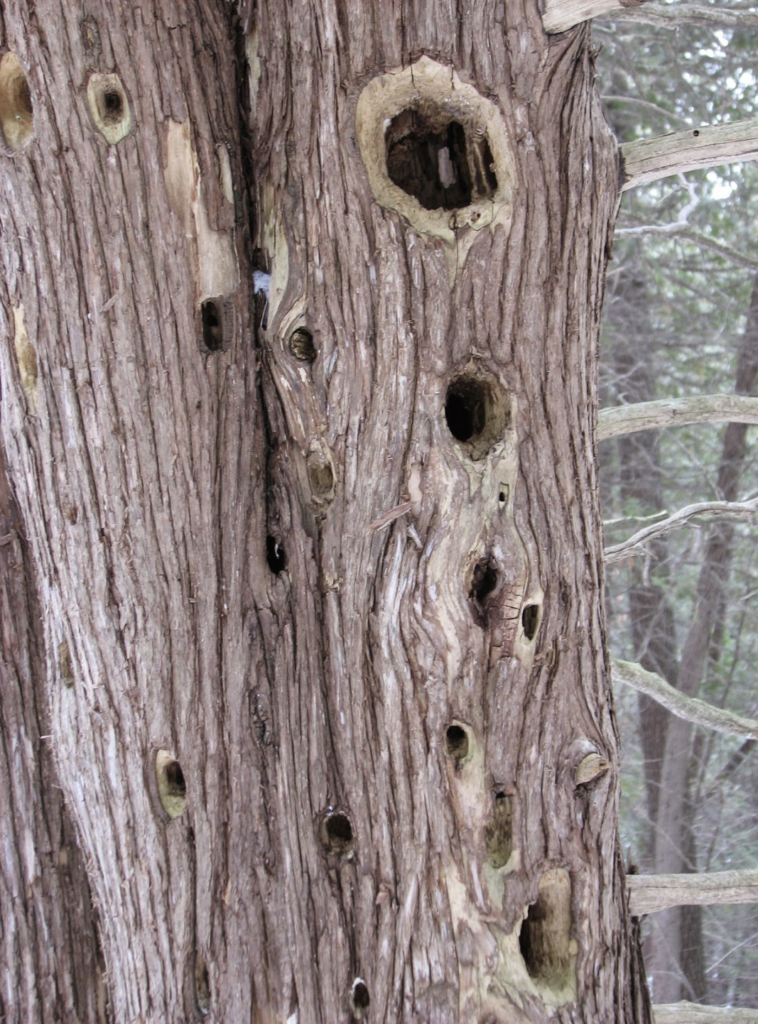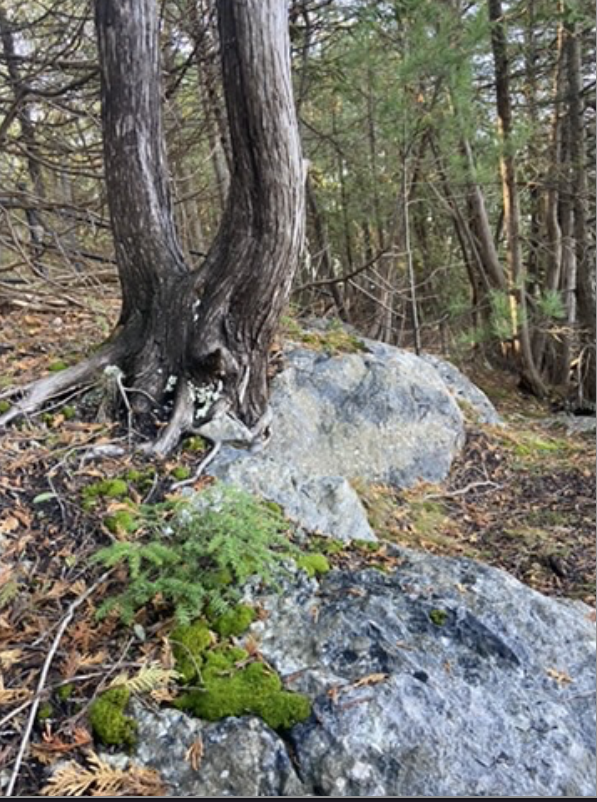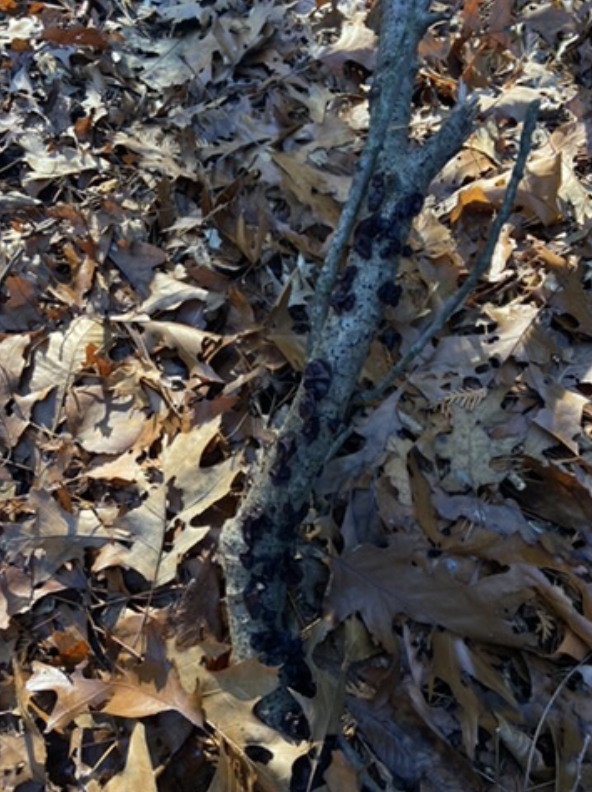I was excited to return to Winooski Gorge, but I’m also sad it was the last time for this semester. I made the same trek from the nearest bus stop and the biting wind stung any exposed skin. I couldn’t imagine how the trees on those high clifftops were faring in these conditions day and night. It makes sense why 80% of Vermont’s birds migrate – their little bodies couldn’t possibly stand the cold. However, when I finally walked through the forest again I saw evidence of some determined inhabitants.

I’m not entirely sure what species created these holes but it’s a nifty trick to last them through the long winters. I can picture many small birds packing in and huddling together to stay warm. It’s also a great way to stay protected from any potential predators!
Sitting in my normal spot slightly away from the cliff’s edge, the wind was a constant presence. I looked around at the small cedars and pines around me and couldn’t help but think that they looked a little more askew and wind-blown than before. The ground was frozen beneath my feet as if I was walking on concrete. Some greenery remained but even the fallen leaves had long been blown away or decayed.


I found this odd-looking fungus growing on a fallen tree branch. It immediately caught my attention due to its likeness to dried cherries. After some research, I identified the species as Exida recisa, a type of jelly fungus that grows on dead oaks. I’m grateful for this project because I’ve been able to discover so many unique species and locations that I likely never would have found otherwise.